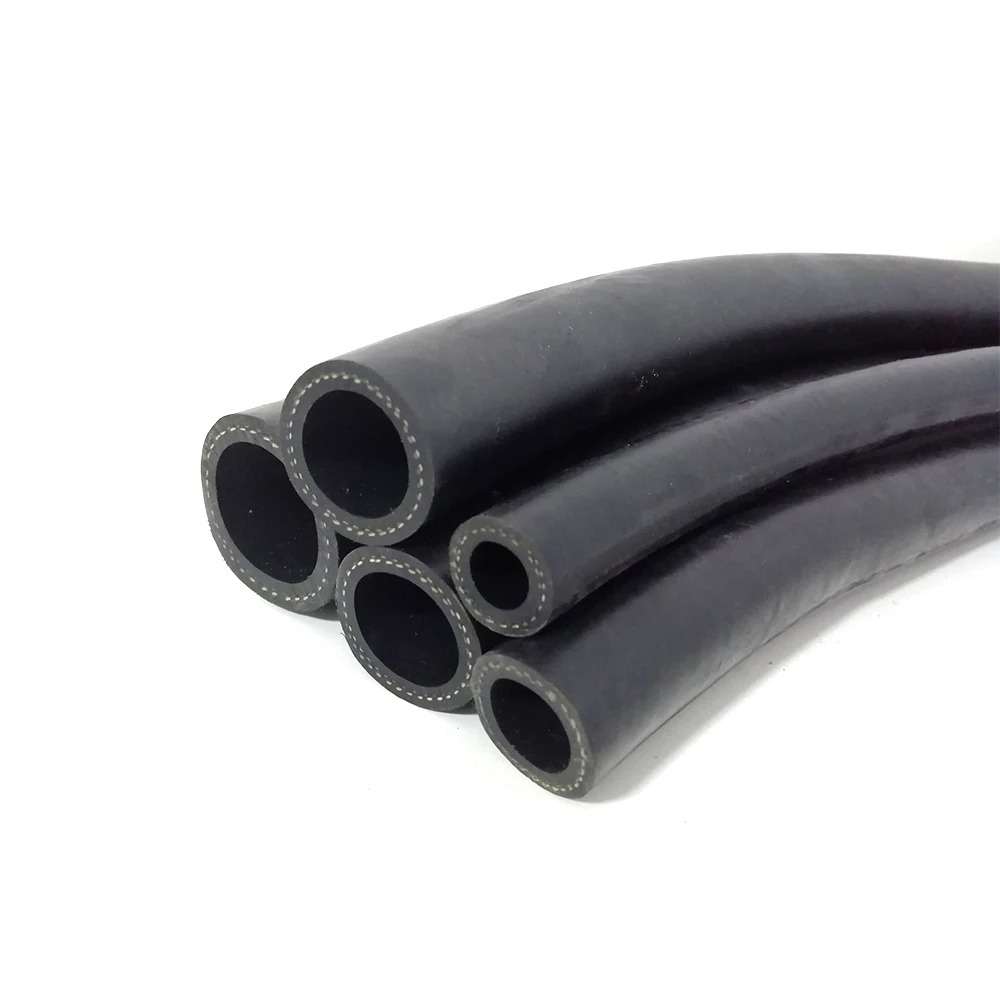Oil/Fuel/Gas Hose
The Oil/Fuel/Gas Hose is specifically engineered to safely and efficiently transfer petroleum-based liquids, fuels, and gases in industrial, automotive and commercial applications. Constructed from high-quality, chemical-resistant synthetic rubber or specialized polymers, this hose offers exceptional durability and flexibility while resisting abrasion, ozone and weathering. Its multi-layer design typically includes an inner tube that is compatible with oil, gasoline, diesel and other hydrocarbons, ensuring safe containment without degradation or leakage. Reinforced with strong synthetic fibers or steel wire braiding, the hose withstands high pressure and prevents kinking or collapsing during use. It operates reliably across a wide temperature range, making it suitable for both hot and cold environments. The Oil/Fuel/Gas Hose is commonly used in fueling stations, oil refineries, automotive garages, and industrial machinery where secure and leak-proof fuel transfer is critical. Additionally, it features corrosion-resistant fittings and couplings that ensure tight connections and easy installation. Its smooth inner surface promotes efficient flow and minimizes buildup, helping maintain optimal system performance. Designed with safety and compliance in mind, this hose meets industry standards and regulations for hazardous materials handling. Whether for fuel delivery, oil transfer, or gas line applications, the Oil/Fuel/Gas Hose provides reliable, long-lasting service, reducing downtime and enhancing operational safety in demanding environments.
What Is An Oil Breather Hose?
An oil breather hose is a crucial component in an engine’s ventilation system, designed to allow the safe release of gases and vapors from the engine crankcase. During engine operation, combustion gases can leak past the piston rings into the crankcase, creating pressure buildup and carrying oil vapors that need to be vented to prevent damage. The oil breather hose connects the crankcase to the intake system or an external catch can, allowing these gases to escape or be recirculated and burned in the engine, which reduces emissions and prevents oil leaks or seal damage. Made from durable, heat-resistant rubber or synthetic materials, the hose withstands harsh engine conditions, including high temperatures and exposure to oil and chemicals. Proper functioning of the oil breather hose is vital for maintaining optimal engine performance, preventing pressure buildup that can cause gasket failure, and reducing harmful emissions. If the hose becomes clogged, cracked, or disconnected, it can lead to engine performance issues such as rough idling, increased oil consumption, or oil leaks. Regular inspection and maintenance of the oil breather hose help ensure the engine ventilation system works effectively, prolonging engine life and improving overall vehicle reliability.
What Is A Hose For Fuel?
A hose for fuel is a specially designed tube used to safely transport gasoline, diesel, or other petroleum-based fuels from one point to another, such as from a fuel tank to an engine or fuel pump. These hoses are constructed from materials that are resistant to chemical degradation, heat, and pressure, typically using synthetic rubber, fluoropolymers, or reinforced composites to ensure durability and prevent leaks. Fuel hoses must withstand exposure to harsh substances like ethanol blends, additives, and varying temperatures without swelling, cracking, or deteriorating. They often feature multiple layers, including a smooth inner lining to facilitate fuel flow and prevent contamination, and reinforcement layers such as textile or steel braiding to provide strength and resist bursting under pressure. Fuel hoses are essential in automotive, industrial, and marine applications, ensuring safe and efficient fuel delivery while minimizing the risk of spills or fire hazards. Additionally, these hoses are designed to comply with strict safety and environmental standards to reduce emissions and maintain engine performance. Proper installation, regular inspection, and timely replacement of fuel hoses are critical to maintaining vehicle safety and operational efficiency, as damaged or worn hoses can lead to fuel leaks, engine malfunctions, or even dangerous fires. Overall, a fuel hose is a vital component that enables the controlled and secure movement of fuel within various systems.
What Kind Of Hose Is Used For Gas?
The kind of hose used for gas is specifically designed to safely transport various types of gases, such as natural gas, propane, or other industrial gases, from storage tanks or supply lines to appliances or equipment. Gas hoses are typically made from flexible yet durable materials like reinforced rubber, stainless steel braided hoses, or synthetic polymers that can withstand high pressure, temperature fluctuations, and exposure to chemicals without degrading. These hoses often feature multiple layers, including an inner lining resistant to gas permeation and an outer protective layer that guards against abrasion, weathering, and UV damage. For safety, gas hoses must comply with strict industry standards and regulations to prevent leaks, which could cause hazardous conditions such as fires or explosions. Common applications include residential gas connections for stoves and heaters, industrial gas supply lines, and portable gas cylinders. Some gas hoses come with fittings made of corrosion-resistant metals, ensuring secure and leak-proof connections. Additionally, certain hoses are designed to be kink-resistant and flexible for easy installation in tight spaces. Proper maintenance and regular inspection of gas hoses are essential to detect wear, cracks, or damage early, ensuring the safe and efficient delivery of gas. Overall, gas hoses are engineered to provide a reliable, safe, and durable solution for transporting gases in a variety of settings.





